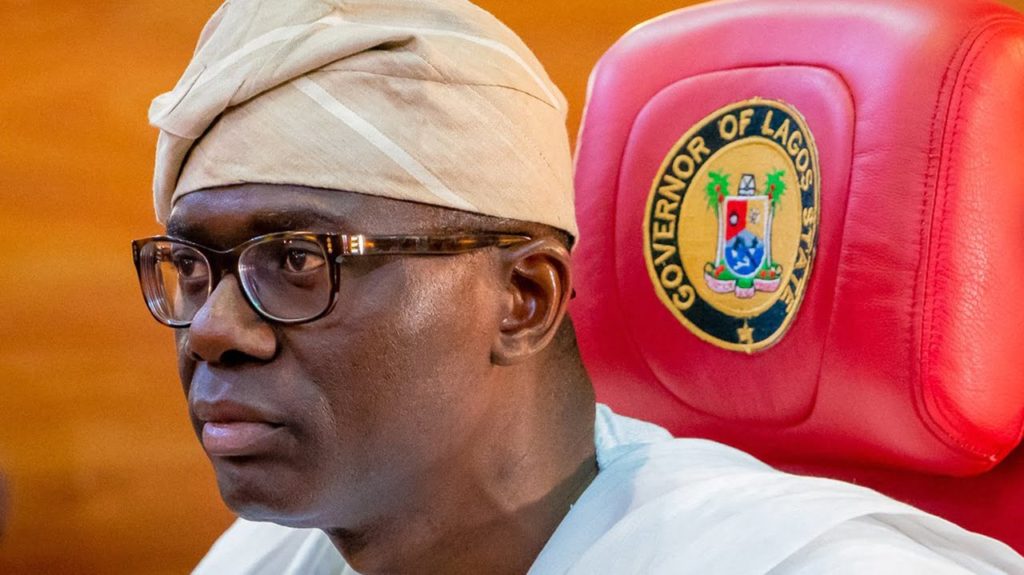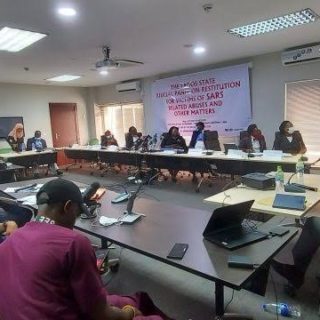Citizen is a column that explains how the government’s policies fucks citizens and how we can unfuck ourselves.

After a series of lootings in Lagos State, Babajide Sanwo-Olu, the governor of the state, declared that the state will need ₦1 trillion to fix the damages incurred.
There have also been allegations of fraud and financial misappropriation against the speaker of the Lagos State House of Assembly.
Due to this, there has been public scrutiny on the Lagos State and the Lagos State House of Assembly’s disbursement of funds. We decided to break down the financial statement of Lagos State to get a true picture of the financial situation of the state.
1. Lagos State earned ₦644 billion in 2019
The total amount paid to the state for the economic value it offers is calculated as revenue.
Economic value includes the services that the state renders to its citizens and the country, from which it is paid back in taxes, allocations and other monies.
This revenue is divided into “non-exchange transactions” and “exchange transactions”.
Exchange transactions are transactions where two people buy and sell from each other. In a non-exchange transaction, there is no sale of any goods, and only one party takes from the other. An example of a non-exchange transaction is taxes and levies.
The money Lagos got from non-exchange transactions in 2019 include:
- Taxation income – ₦348,001,113,000 billion .
- Levies, fees and fines – ₦26,597,553,000 billion.
- Statutory allocation – ₦229,495,389,000 billion.
- Grants – ₦483,934,000 million.
- Other revenue from non-exchange transactions – ₦3,958,723,000 billion.
Exchange transactions include:
- Income from other sources – refers to money gotten from private sector development programmes, such as the Lekki-Ikoyi toll revenue, proceeds from hospital units and other miscellaneous revenues. This revenue was ₦24,014,757,000 billion.
- Capital receipts – ₦8,972,888, 000 billion.
- Investment income – ₦2,077,847,000 billion.
- Interest income -₦1,161,184,000 billion.
The total operating revenue of the state was ₦644,762,788,000.
Read: This Is Lagos
2. Lagos State spent ₦278 billion in 2019

From the gross revenue of the state, the state spent ₦278,551,391,000 billion on expenses, leaving it with ₦366,211,397,000 billion.
The ₦278 billion expenses went to:
- Wages, salaries and employee benefits – ₦107,132,214,000 billion.
- Grants and other transfers – ₦16,626,164 billion.
- Subvention to parastatals – ₦53,445,714 billion.
- General and administrative expenses – ₦101,347,300 billion.
3. Other losses, charges and expenses amounted to ₦366 billion
After spending ₦278 billion on operating expenses, Lagos State further incurred losses in these respects:
- Capital expenditure – ₦134,521,650,000 billion.
- Public debt charges – ₦62,533,163 billion.
- Net loss on foreign exchange transactions – (₦2,332,949,000 billion).
- Depreciation – ₦104,491,678 billion.
4. Lagos State had a ₦66 billion surplus for the 2019 financial year.
After spending ₦278 billion on recurrent expenditure, and losing ₦366 billion on capital expenses, foreign exchange losses, public debt charges and depreciation, Lagos State had a surplus of ₦66,997,855,000 billion for the 2019 financial year.
5. Lagos State’s total asset is ₦2.4 trillion
Assets are divided into current assets and non-current assets.
Current assets include:
- Cash and cash equivalents – ₦33,349,831,000 billion.
- Receivables from exchange transactions – ₦325,268,000,000 billion.
- Receivables from non-exchange transactions – ₦31,961,939,000 billion.
- Inventory – ₦3,076,959,000 billion.
Non-current assets include:
- Available for sale investments – valued at ₦49,665,927,000 billion .
- Other financial assets – valued at ₦16,453,704,000 billion.
- Property, plant and equipment (PPE) – valued at ₦2,271,309,527 trillion.
Read: Money
6. Lagos State has total liabilities of ₦957 billion
Liabilities are divided into current and non-current liabilities.
Current liabilities include:
- Payables and other liabilities – ₦123,543,010 billion .
- Public funds – ₦434,004,000 million .
- Public debt (borrowings) – ₦101,234,508,000 billion.
- Finance lease obligations – ₦2,769,303,000 billion.
Non-current liabilities include:
- Public debt (borrowings) – ₦684,608,927,000 billion.
- Finance lease obligations – ₦3,099,800,000 billion.
- Retirement benefits obligations – ₦41,857,304,000 billion.
From this breakdown, Lagos State spent ₦134 billion to build infrastructure in 2019. So, spending ₦1 trillion to rebuild the state would equal the state’s capital expenditure for over six years, if we take into account the impact of inflation.
For more on Lagos State’s audited financial statements, check here.
Read: Lagos New Taxes Will Send Everyone Back To Their Village
We hope you’ve learned a thing or two about how to unfuck yourself when the Nigerian government moves mad. Check back every weekday for more Zikoko Citizen explainers.
COMPONENT NOT FOUND: donation




